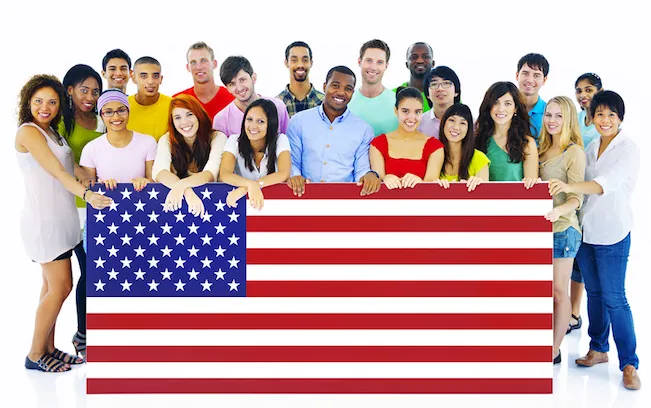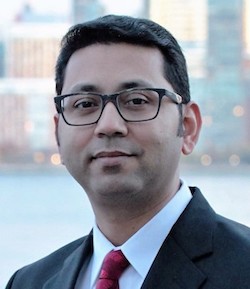
The U.S. has the world’s largest international student population, with more than 1 million students choosing to pursue their education here
A new annual report shows the number of new international enrollees in U.S. universities declined for the first time in 12 years, even as the total number of international students rose — and in business schools, the numbers have gone as flat as a pancake.
The 2017 Open Doors Report on International Educational Exchange shows a 3% rise in the number of international students in the U.S. over the prior year, to 1.08 million — a much smaller increase than in previous years. The number of international students enrolled at a U.S. institution for the first time in fall 2016 actually declined, dropping by nearly 10,000 students to about 291,000, a 3% decrease from the previous year. American students headed in the other direction to study abroad increased by 4% from the prior year.
Meanwhile, the international student population in business and management studies, representing the largest population outside STEM (Science, Technology, Engineering, and Math) fields, was flat, growing from 200,312 in 2015-2016 to 200,754, an increase of only 442, or .02%. The slowdown was forecast a year ago: From 2013-2014 to 2014-2015, the international business student population grew from 188,179 to 197,258, or 4.8%; but from 2014-2015 to 2015-2016 the population grew just 1.5%.
DROP IN CHINESE, INDIAN STUDENTS HITS B-SCHOOLS HARD

Rahul Choudaha
The Open Doors study was conducted by the Institute of International Education (IIE), a U.S.-based not-for-profit educational and cultural exchange organization that has been measuring the number of international students in the U.S. since 1919. Surveys were sent to approximately 3,000 accredited U.S. higher education institutions; separate surveys were conducted for U.S. study-abroad programs.
“The numbers overall have increased to over 1 million, but if you dig deeper you will see there are differences by field of study and source countries, and a lot of the growth in enrollment can be attributed to growth in OPT, or Optional Practical Training,” says Rahul Choudaha, executive vice president of global engagement and research at StudyPortals, an international study choice platform. “But new enrollment has actually declined, and in business and management the numbers are flat — practically no change. The business field has been growing much slower than other fields, particularly the STEM field.”
Choudaha, who also blogs about higher education issues as DrEducation, tells Poets&Quants that the biggest impact on overall international enrollment comes from changes in the Chinese market, which supplies the most international students to U.S. schools, including B-schools. “There was a softening in demand for a time in China, and a small decline in the numbers from India, as well,” Choudaha says. “In 2009-2010, 24% of Chinese students were in business management. If you now look at 2016-2017, it is slightly lower, 23.1%. But if you consider the huge number of students we’re talking about, 1% is 3,000-plus students. In India, the numbers have declined to 10.4% in 2016-2017 from 15.3% in 2009-2010.”
Choudaha points out that the new Open Doors data predates the 2016 presidential election, and therefore does not record the so-called Trump effect, the expected negative impact on international enrollment at U.S. schools resulting from the president’s immigration rhetoric. “That will start coming in for this year’s enrollment number,” he says.
INTAKE SLOWS TO A TRICKLE; OUTGOING ON THE RISE
International enrollment has been slowing overall, not just at business schools. According to IIE data, expansion of the total number of international students in U.S. higher education has grown for 11 consecutive years, and by no less than 7% from 2011-2012 to 2015-2016; between 2015-2016 and 2016-2017, however, that figure dropped to 3.4%, from 1,043,839 to 1,078,822. And the slow-down will continue, IIE says, offering a snapshot of the future via a separate online fall enrollment survey in September and October 2017. In it, the approximately 500 colleges and universities reported continued flattening in the overall number of enrolled students and an average decrease of 7% in the number of new enrolled students, though 31% if schools reported increases in new enrollments and 24% reported no change from last year.
The top U.S. schools for international students: New York University (17,326), UCLA (14,327), Columbia University (14,096), Northeastern University (13,201), and Arizona State University (13,164).
Meanwhile, headed the other way (literally), IIE found that 325,339 American students received academic credit abroad in 2015-2016, a 4% increase from the previous year and the continuation of a long-term trend: Study abroad by American students has more than tripled in the past two decades. The top host destinations for U.S. students were the United Kingdom, Italy, Spain, France, and Germany; 25% of all students who studied abroad were majoring in STEM fields at their home institution, followed by business at 20.9%.
BAD TREND LIKELY TO CONTINUE
IIE places the blame for the reduced international student numbers on “a mix of global and local economic conditions, and in some cases expanded higher education opportunities at home and declining populations.” The Open Doors report points to the scaling back of large Saudi and Brazil government scholarship programs that produced the biggest decreases in the number of students from any two countries. The report attributes much of the increase from the past couple of years, meanwhile, to more students pursuing OPT related to their academic fields after their degree studies, “and thus remaining longer in the U.S. higher education system. These flattening trends have a nearly two year history, as students reflected in the current Open Doors report were already on campus in September 2016 for the fall term, and most had applied in 2015 and made their decisions in spring 2016.”
Whatever the cause, the ramifications for schools — and the larger economy — are bad, says Alyson L. Grunder, deputy assistant secretary of state for policy in the Bureau of Educational and Cultural Affairs. “International student exchange is an essential contributor to America’s economic competitiveness and national security,” she says. “The U.S. higher education sector remains the global leader in welcoming students from around the world, and at the same time, we are committed to increasing opportunities to study abroad for Americans.
“We need to develop the talent and skills necessary for 21st-century careers. It is in our national interest to build and grow the international relationships and networks that are key to addressing the global challenges and opportunities we face going forward.”
DON’T MISS WHY U.S. B-SCHOOLS NEED CHINESE STUDENTS and TRUMP COULD IMPACT INFLUX OF STUDENT TALENT











Questions about this article? Email us or leave a comment below.